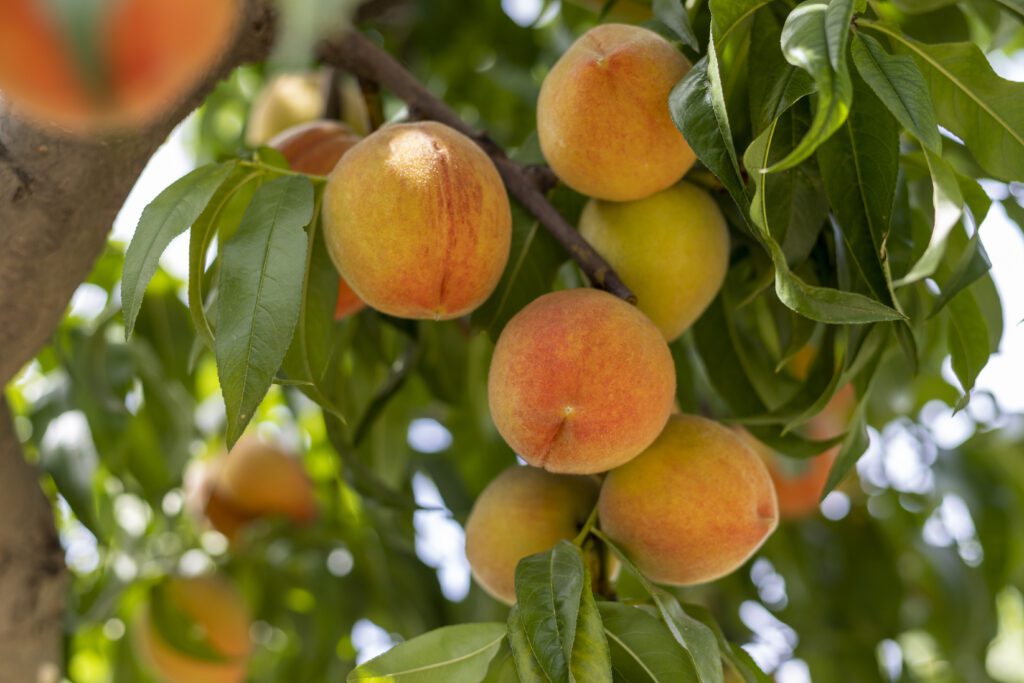by RYAN MILEJCZAK
Sponsored by Farm Credit of Central Florida
Much like oranges are iconic for Florida, appearing in logos and on license plates, peaches are one of the most recognizable crops for Georgia. But that doesn’t mean Georgia is the only state where peaches are grown. In fact, delicious peaches are also grown right here in the Sunshine State.
The peach tree, Prunus persica, was first domesticated in China as long ago as 2000 BC, before finding its way west to Persia and later Europe. In the 16th century, peaches finally made their way to the New World, and in fact, it was right here in Florida where they made landfall. They were brought by Spanish monks in the mid-1500s to what was then La Florida, or Spanish Florida. They quickly became popular, and by the early 1600s, they were grown as far north as Jamestown, Va.
Today, peaches are grown in a wide variety of states. Despite their iconic association with peaches, Georgia only comes in at number 3 for peach production, with California and South Carolina leading production in first and second place respectively. While Florida is not a major grower of this crop, our peach industry is actively developing. One major advantage our peach industry has is the growing season. While the peach season of other states runs from May/June to August/September, Florida’s peach season arrives early, running from early March to early May. That means Florida peaches are typically the first to hit the market.
Peach trees take about two years to start producing fruit. All peaches require some period of cold temperatures for proper growth, with the exact requirements depending on the peach variety. Some need as few as 50 chill hours, well others require more than a thousand.
Here in Florida, we’ve developed a number of varieties that require fewer chill hours and that are better suited to our warm climate. Some varieties include the Florida Grande, FloridaCrest, and UFGold.
There are certain terms you’ll see used when talking about varieties of peaches:
- Melting or non-melting: This refers to fruit texture. Melting fruit is juicy and stringy, while non-melting fruits are firmer and more commonly used for canning.
- Clingstone or freestone: A clingstone peach has a pit that can’t be separated from the flesh, while the flesh freely pulls away from the pit in a freestone peach. Non-melting peaches are always clingstone peaches.
As of the most recent report, there are about 2,000 acres of commercial peach production in Florida. With chill hours low in recent years, Florida peach growers have faced challenges, but they continue their hard work to grow the Florida peach industry. A key consideration for growing peaches in Florida is location. Based on current data, the area south of Gainesville and north of Orlando is considered ideal.
In addition to being juicy and delicious, peaches are also highly nutritious. A medium peach contains only 50 calories, and provides 2 grams of fiber, 6% of your daily vitamin A, and 15% of your daily vitamin C. It also contains more than 2% of your daily value of other essential nutrients, including vitamins E and K, folate, iron, potassium, magnesium, and zinc. They contain no saturated fats, and are a quality source of antioxidants that may help protect against cancer.
So next time you’re shopping for delicious peaches, look for Florida’s early season varieties or head to any of the various u-pick farms around the state to pick your own. You’ll not only have a delicious treat to enjoy raw or in recipes like peach cobbler, you’ll also be supporting our hardworking Florida farmers.

